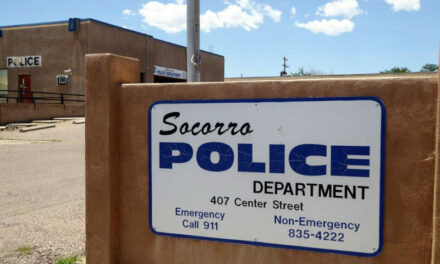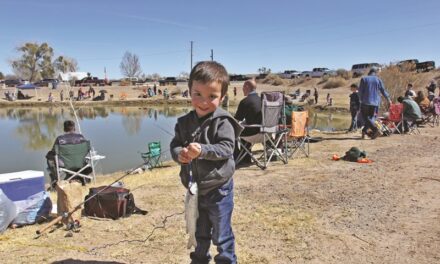
Courtesy Gila National Forest/U.S. Forest Service
The Wilderness Ranger District of the Gila National Forest is seeking public comments on a proposal to remove unbranded and unauthorized cattle from the Gila Wilderness, using either lethal or non-lethal methods. Originally introduced in February, the plan came under fire from New Mexico ranchers. New Mexico Cattle Growers Association had concerns with the FWS agents’ ability to delineate branded and unbranded livestock.
“From a helicopter, this task would be difficult for even a knowledgeably adept livestock producer to identify brand markings and ear tags,” NMCGA Loren Patterson said at the time. “There is no assurance that the gunning-down of these livestock will not include private property. With estray herd numbers in the Gila not known, the current FWS plan, with its lack of public notice or input, leaves no room for agent accountability from New Mexico’s stakeholders or citizens.”
Nevertheless, in a press release last week, Gila National Forest Supervisor Camille Howe said that removal of unauthorized cattle remains necessary to protect the habitat of aquatic and terrestrial wildlife, including federally listed threatened and endangered species.
“The unauthorized cattle in the Gila Wilderness trample stream banks and springs, causing erosion and sedimentation,” Howe said. “This proposal will help restore the wilderness character of the Gila Wilderness by removing non-native species and alleviating the damage caused by over-grazing.”
The problem of unauthorized cattle began in the mid-1970s when a permittee declared bankruptcy and abandoned his cattle in the wilderness. Throughout nine contracts for their eradication, a total of 756 cattle have been removed – alive or euthanized – from the Gila Wilderness.
Forest Service records indicate that of these, only one cow was branded, and the remaining 755 cattle did not have a brand, ear tag, or other ownership identification. On average, for every animal successfully led out of the Wilderness, one dies or is euthanized during capture and removal efforts due to the remote location, rugged topography, and stress to the wild, uncooperative animals.
In February of this year, the Animal and Plant Health Inspection Service Wildlife Services conducted a two-day aerial operation during which 65 cattle were euthanized.
If a lethal removal method is selected, an area closure would be implemented before and during any aerial euthanasia missions. Aerial shooting would occur over two seven-day periods in winter when visitor activity within the Gila Wilderness is typically at its lowest.
All lethally removed or euthanized cattle would be left on site to naturally decompose. Cattle would not be shot within or adjacent to any waterbody or spring, designated hiking trail, or known culturally sensitive area. If a carcass is within or adjacent to one of these areas, Forest staff would remove the carcass. A wilderness minimum requirements decision guide would be completed and approved before using any methods otherwise prohibited under the Wilderness Act.
NMCGA is of the opinion that the Federal Government should not gun down livestock on Federal Property in the State of New Mexico, or contract with others to accomplish the same goal.
The public is encouraged to submit issues or ideas that should be considered in developing a final proposal that meets the abovementioned need.
Comments should include:
- Name, address, phone number, and organization represented, if any.
- Title of the project “Gila Wilderness Livestock Removal” on which the comment is being submitted.
- Specific facts and supporting information for the responsible official to consider.
Commenter names, addresses, and email addresses will become part of the public record. Comments must be received or postmarked by January 9, 2023.
Written comments may be delivered in person or by mail to: Gila National Forest, Attn: Planning Program, 3005 E. Camino del Bosque, Silver City, NM 88061. Office hours are 8 a.m. to 4:30 p.m. Monday – Friday. Comments may also be submitted by email to: [email protected].
For additional information, contact the Forest Service at (575) 388-8201.


















